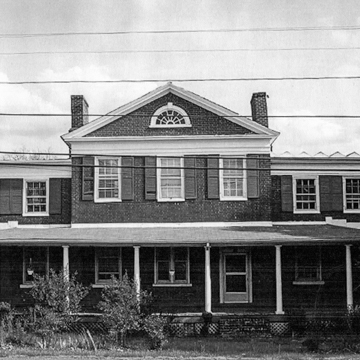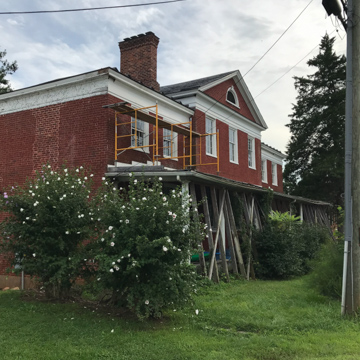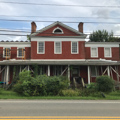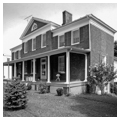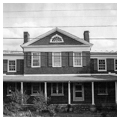This three-part Palladian building has its original Jeffersonian accordion (or peak and valley) roof covering its right wing, where shallow troughs carry water from the roof ridge to the gutters. Thomas Jefferson used this generally unsatisfactory roof treatment at the University of Virginia, but there the roofs have since been covered or removed. The method was intended to provide drainage for almost-flat roofs. Here, the accordion roof is visible and also seems to be functioning. Jeffersonian influence also is seen in the building's massing, the bold wooden entablature, a lunette in the pediment, and the diminutive second-story windows. Unfortunately, the courthouse fire of 1869 that destroyed the town's early records means that very little is known about this building. It was almost certainly not built as a private house because it originally had four separate front entrances opening onto a continuous porch spanning the facade.
Farther west down the hill, Rose Terrace (1820s) is a Federal brick house on a high basement that began with a hall-parlor plan and received an addition a few years later. Among its outbuildings is an elegant lattice well house with a pyramidal slate roof crowned by a wooden finial.






















